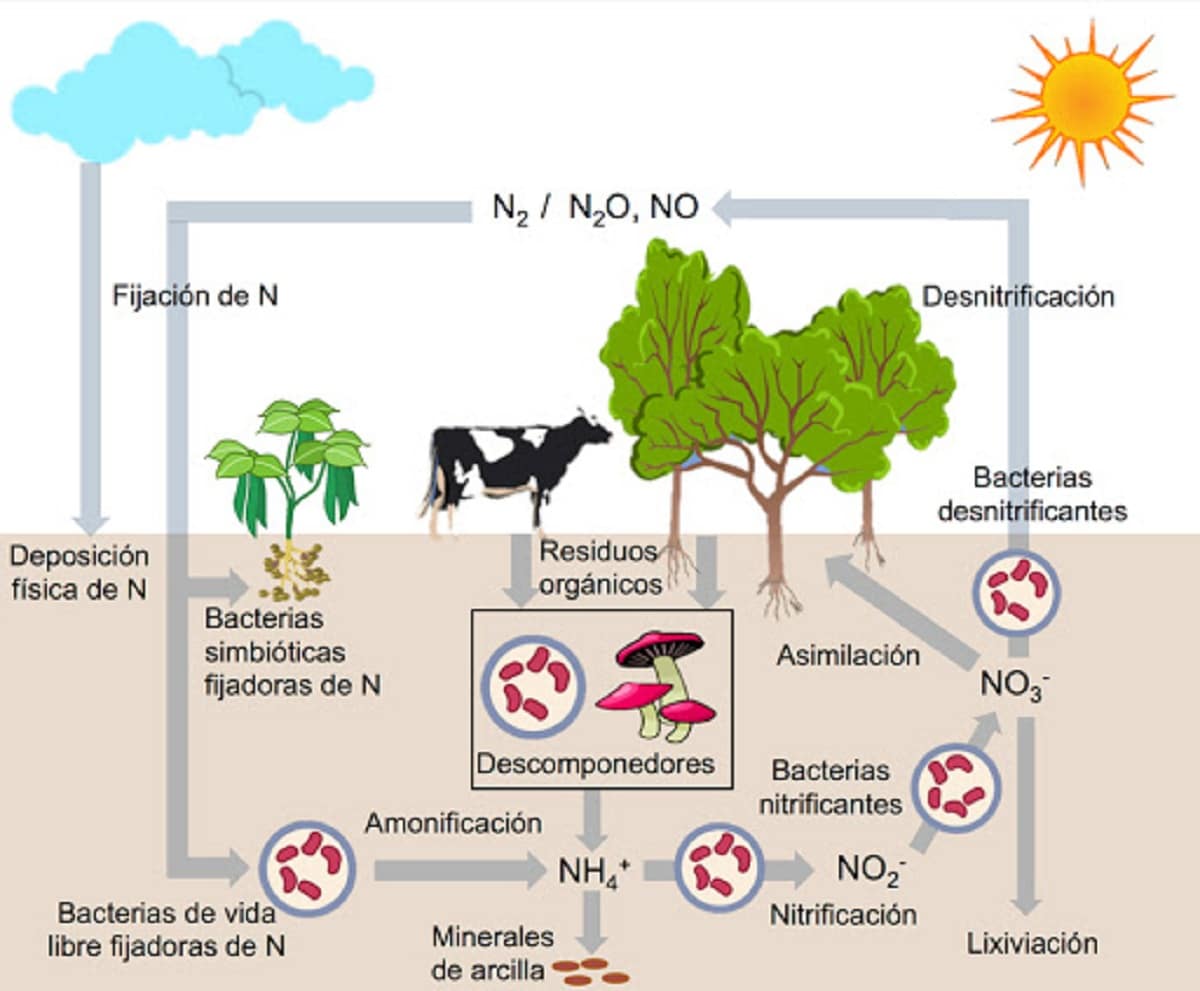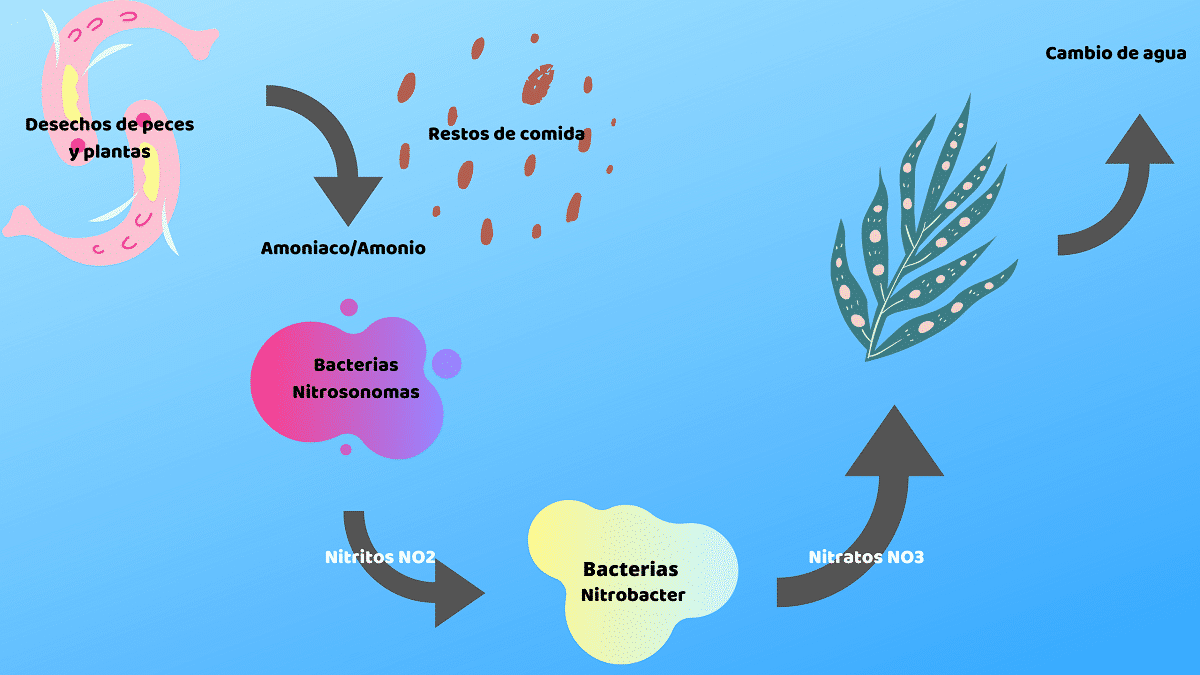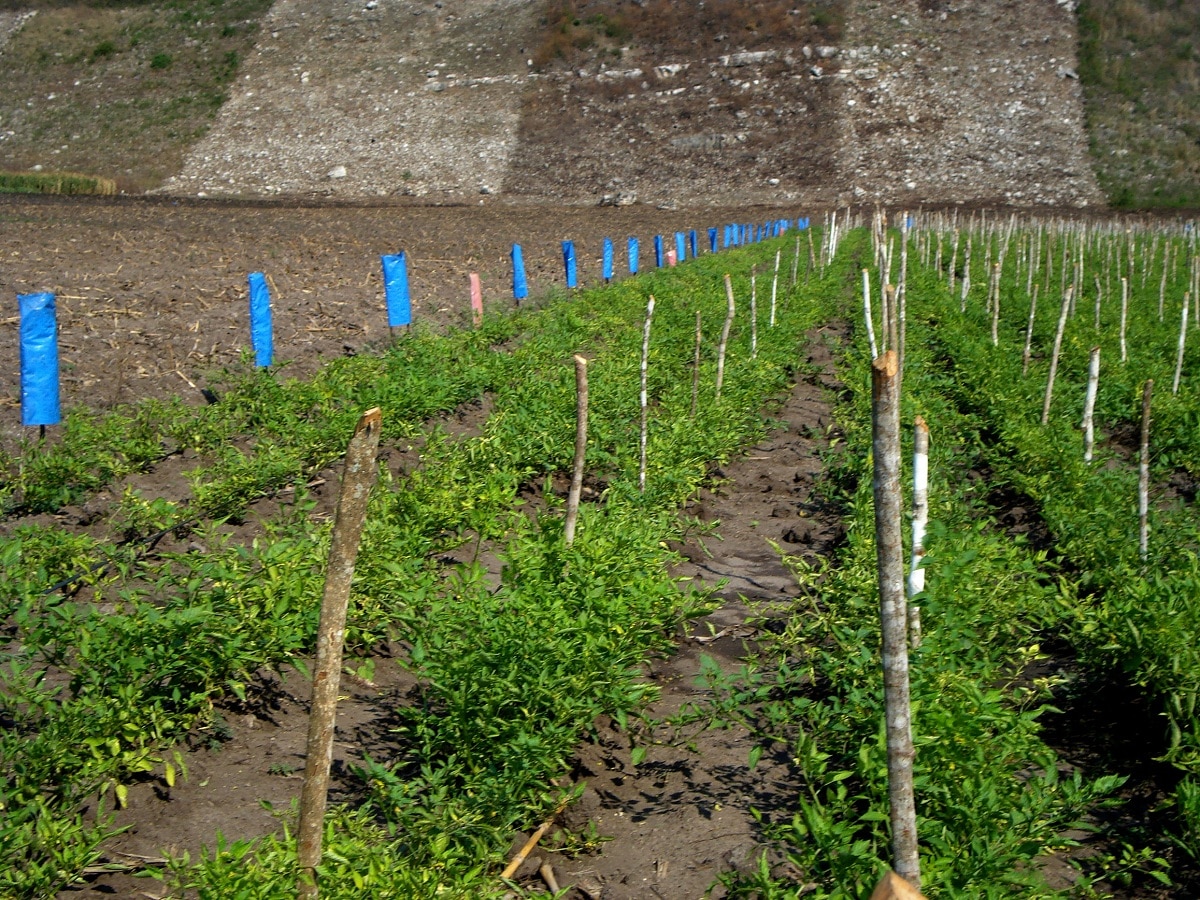
El cycle of nitrogen it is a fundamental biogeochemical cycle for the correct functioning of life. There are different types of biogeochemical cycles that are those that guarantee favorable environmental conditions for the development of life. All living organisms depend on the nitrogen cycle for their growth and development.
Therefore, we are going to dedicate this article to tell you all the characteristics, origin and importance of the nitrogen cycle.
What is the nitrogen cycle

The nitrogen cycle is nothing more than in set of chemical and biological processes that allows to supply living beings with nitrogen for their development. And it is that this element is important so that a living being can develop in its entirety. There are different reservoirs, stages of this cycle that are of great importance for human life. As with the carbon cycle and other natural cycles, there are sources of emission of this element. On the other hand, for the cycle to close completely, there must be sources of nitrogen absorption. In this way, it is achieved that the global nitrogen balance must be stable so that everything works correctly.
However, humans are causing various environmental impacts on a global scale and this cycle is being severely impaired. Among the characteristics that we have of this biogeochemical cycle we have its origin. And it is that nitrogen originates from the creation of new atomic nuclei, non-metallic chemical elements in a gaseous state. We know that various organic and inorganic chemical forms manifest throughout the cycle. The operation of all elements begins from the loss of electrons. That is when, without electrons, amino acids, DNA and proteins can be made. Thanks to all this composition, the nitrogen cycle is responsible for having a fundamental role in the growth of plants and the tissue of living organisms.
Although it is a type of intangible ecosystem service, it is essential for the development of life. Therefore, one must learn to preserve this cycle as it is vital.
Nitrogen reservoirs global scale

We are going to analyze which are the main reservoirs where nitrogen is found on a global scale. The first part are the atmosphere. We know that our atmosphere has a high presence ofl nitrogen, this being the 78% of all gases. It is most of this layer of air. Although atmospheric nitrogen is inert and does not perform any type of reaction, it plays its role in all this.
Another area where there is a nitrogen reservoir is in sedimentary rocks. 21% nitrogen is found mixed with organic matter and distributed throughout the oceans. Let's not forget that marine life also needs nitrogen to be able to develop properly. Nitrogen in marine life is incorporated in a different way. There are many living beings that need nitrogen in their day to day to be able to fulfill vital functions.
The last part of the reservoir of this element is in microorganisms. The microorganisms that participate in the nitrogen cycle are those known with the name of fixatives, nitrifiers and denitrifiers. Fixatives are those organisms that aim to fix nitrogen in your body or in other organisms. On the other hand we have the nitrifiers. It is about those living beings that are fed by nitrogen as part of the organic matter. Denitrifiers are those that remove nitrogen as a result of chemical reactions.
Phases of the nitrogen cycle

We are going to see what are the main phases through which this cycle passes since it alternates continuously. We found different phases in which nitrogen was present as a gas was taking on one relevance or another. Let's see what the main phases are:
- Fixation: It is the phase in which atmospheric nitrogen is obtained by all living beings that can use it through the abiotic way. It is just that part of the ecosystem that they have no idea. For example, electrical energy from lightning and solar radiation are abiotic elements. Biotic life is the part that is capable of obtaining nitrogen from microorganisms that exist in the soil.
- Assimilation: nitrates stand out here. Plants play a fundamental role throughout this phase of the cycle. In the cytoplasm of plant cells we have nitrates which are reduced to nitrites. In nitrite it is used to be able to be incorporated into the plant through the roots. We know that plants use nitrogen as food in order to grow and reproduce.
- Ammonification: it is the phase of the nitrogen cycle where it is converted into ammonium ion due to the action of aerobic microorganisms. This means that they are microorganisms that work in the presence of oxygen.
- Nitrification: It is the part of the process that consists of the biological oxidation of ammonia by aerobic microorganisms. Thanks to this nitrification, the ammonia nitrogen returns to the soil to be used again by the plants.
- Immobilization: it is the opposite process to nitrification.
- Denitrification: is the opposite process of fixation. Here we have a process known as anaerobic respiration. That is, this type of process occurs in the absence of oxygen. This process responsible for returning nitrogen to the atmosphere and dissolved nitrate in water. It is the last phase of the cycle where everything returns to its origin.
Importance
As we have mentioned before, this cycle is quite important at an ecological level. Nitrogen is important to organisms as long as it is usable by them. It is an essential element for the production of DNA, amino acids, proteins and nucleic acids. They also become a fundamental element for development and productivity in agriculture. Much of the fertilizers used in agriculture to make crops grow faster and with better characteristics have a lot of oxygen.
I hope that with this information you can learn more about the nitrogen cycle and its characteristics.
Good morning, I congratulate you for the excellent information, I am a teacher and I had to prepare a class for this cycle, and it was very helpful, however there are some details that need to be corrected, errors when transcribing, such as in The fixation phase says… they have no idea, I should say… they have no life.